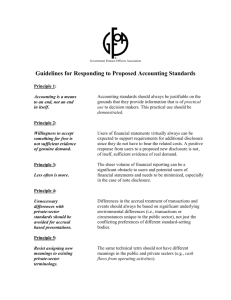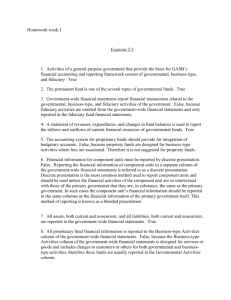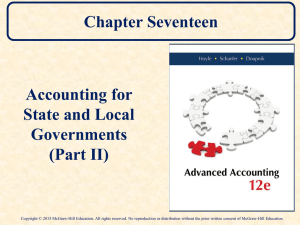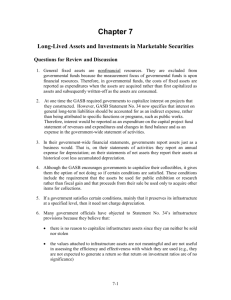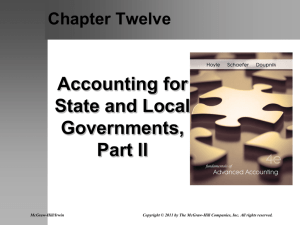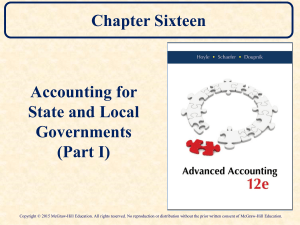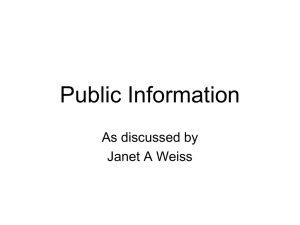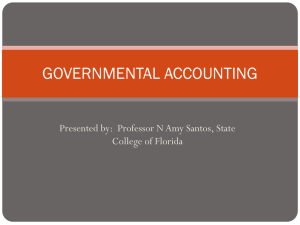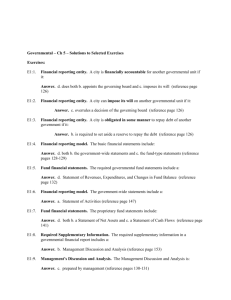What are General Capital Assets?
advertisement
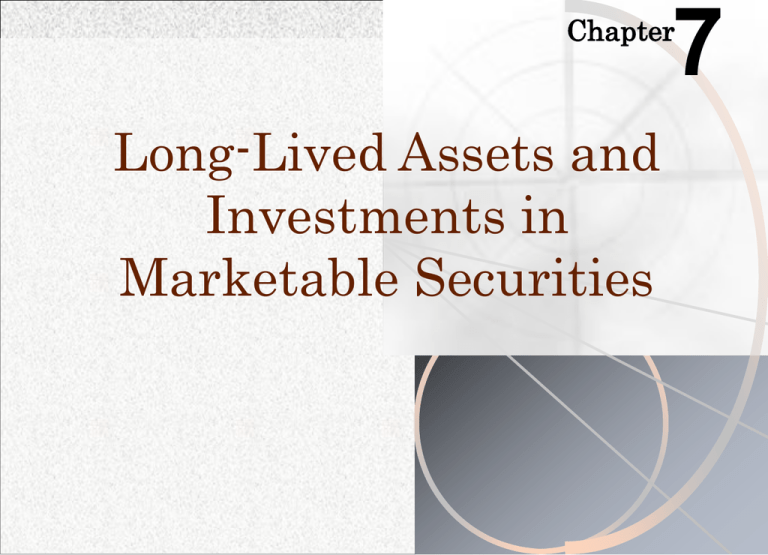
7 Chapter Long-Lived Assets and Investments in Marketable Securities What are General Capital Assets? Long-lived assets used by activities accounted for by governmental fund types. Accounting is done at the Government-wide level Distinguished from capital assets that are specifically associated with activities reported in proprietary and fiduciary funds. Typical Classifications of General Capital Assets Land Buildings Improvements other than Buildings Machinery and Equipment Construction Work in Progress Infrastructure (e.g., roads, streets, bridges) Typical Financing Sources for General Capital Assets Tax-supported bonds Grants from other governmental units (e.g., Federal or state grants ) Transfers from other funds Gifts from individuals or organizations Special assessment bonds or taxes Capital leases Accounting for General Capital Assets General capital assets are: Capitalized in the governmental activities accounts at the government-wide level Depreciated at the government-wide level Debited to Expenditures in the appropriate governmental fund. Acquiring Capital Assets From expenditures of General Fund Special revenue funds Capital project funds Note: If money received from governmental units, individuals, or organizations is restricted for the purchase or construction of specified capital assets – it is recommended that a Capital Projects Fund be used. Assigning Costs to General Capital Assets Follow Cost Principle (all cost necessary to bring asset to serviceable condition) Invoice cost or historical cost All other necessary and reasonable costs: (transportation, installation, title, closing fees) Capitalize interest on constructed assets Record donated assets at fair value on date of gift (unless received from another fund, in which case use historical costs – to avoid recognizing a gain in the funds which would have to be eliminated at the government-wide level) Accounting for Acquisition of Capital Assets Example: Purchased office equipment for the Mayor’s office and paid $50,000 cash from the General Fund. Governmental Activities: Equipment Cash General Fund: Expenditures Cash Dr. 50,000 Cr. 50,000 50,000 50,000 Depreciation Accounting and Reporting Depreciation on general capital assets, (except occasionally infrastructure) is required at the government-wide level. Depreciation is not recorded on inexhaustible assets, such as land and noncapitalized collections of art. The government can elect not to depreciate certain eligible infrastructure assets, under the modified approach (see next slide). Election to use the Modified Approach for Infrastructure Assets The government can elect not to depreciate certain “eligible” infrastructure assets if An asset management system is in place that includes an up-to-date inventory of eligible assets, condition assessments of the assets and summary of results using a measurement scale estimates each year of the annual amount needed to maintain and preserve the assets at the established condition level The government documents that these assets are being preserved at or above established levels of condition. Election to use the Modified Approach for Infrastructure Assets If the government elects not to depreciate certain “eligible” infrastructure assets they must expense all repairs when incurred. Accounting for Collectibles Collectible are not required to be capitalized if the following criteria is meet Must be held for public exhibit, education, or research Must be protected, cared for, and preserved They are subject to organizational policy (proceeds from any sale must be used to purchase other items of collection) Accounting for Capital Leases Follow SFAS No. 13 criteria to determine if the lease is a capital lease, rather than an operating lease Record capital assets in the government-wide statements in the amount of the present value of minimum lease payments or fair value, if lower Record an expenditure in the governmental fund that is using the asset and making the payments. Accounting for Capital Leases (Cont’d) Example: Capital lease with present value of minimum lease payments of $50,000 Governmental Activities: Equipment Capital Lease Obligations Payable Special Revenue Fund: Expenditures Other Financing SourceCapital Lease Agreements Dr. 50,000 Cr. 50,000 50,000 50,000 Required Disclosures about Capital Assets Capitalization policy Policy for estimating useful lives of assets Beginning and end of the year balances, including accumulated depreciation Acquisitions during the year Sales or other dispositions during the year Depreciation expense for the current period Why collections (e.g., works of art or historical treasurers) are not capitalized Costs Incurred After Acquisition Additions/betterments vs. replacements/ maintenance Capitalize costs of additions and betterments; don't capitalize replacements and maintenance expenditures Some replacements might be partly additions or betterments; if so, capitalize as appropriate but remove cost of old asset Requires judgment to determine whether an asset has been enhanced Marketable Securities Why do Governments and Not-for-proftits have marketable securities Receive large amounts of cash at one time Maintain a “rainy” day fund Maintain pension assets Maintain endowment funds Bond sinking funds Marketable securities are acquired to provide income on these funds Miscellaneous topics Repurchase agreements: Reverse repurchase agreements Risks & rewards – “Orange County Disaster” Government Disclosures Credit risk on invested securities Interest rate risk Foreign currency risk ****All governments and not-for-profit organizations should have an investment resolution which is evaluated periodically.
